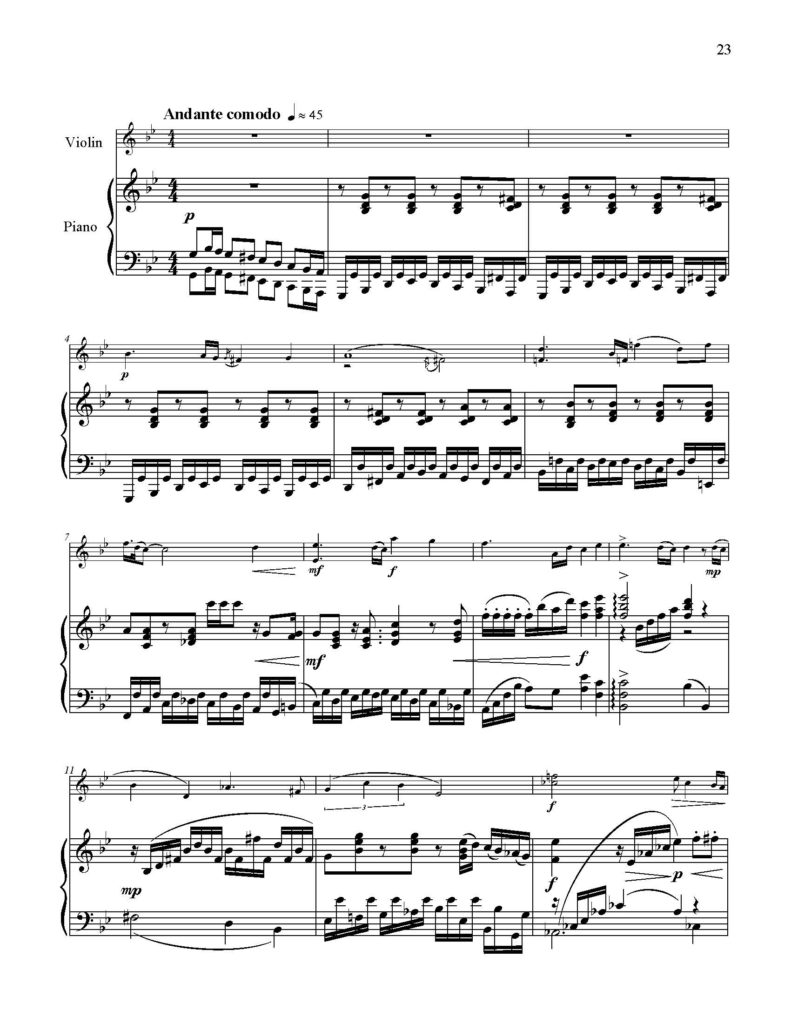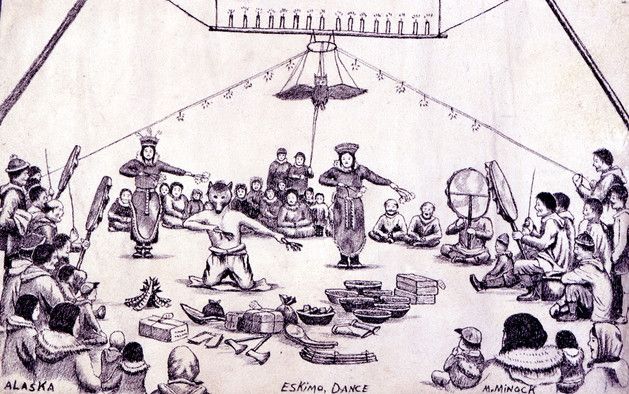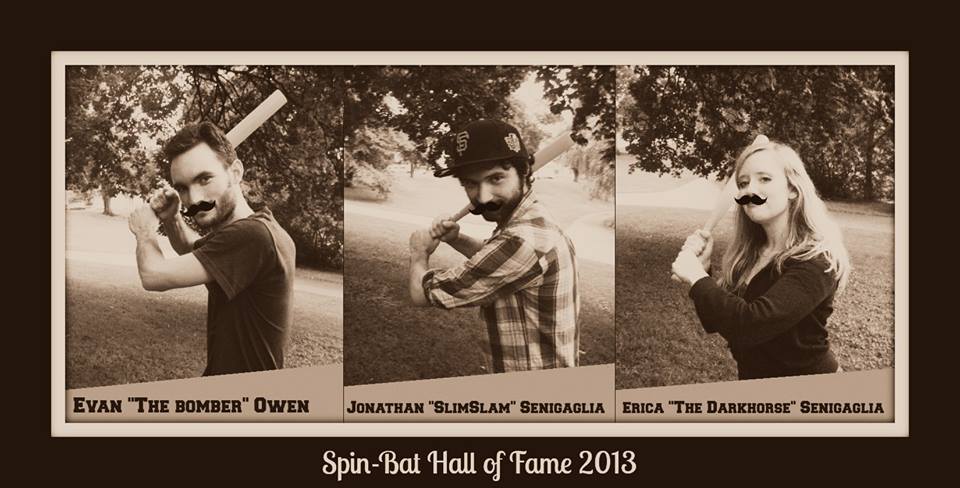One time I let myself fall. Down, down, down into the mud I went, slowly, ever so slowly, until my head was under, and I was lost for a time.
One time I lost everything I’d ever written. This is what I wrote next.
The date was September 24, 2006, my 22nd birthday. Erica and I decided to have a picnic in Meadow Park, share a bottle of wine, and take a nap. It was during this wine-induced nap that somebody walked into our house, in the middle of the day no less, while we slept peacefully in the bedroom, and stole my laptop.
This particular laptop happened to contain all the music I had ever written up to that time. Was it backed up somewhere? Of course not. After all, my laptop had never been stolen before, so why would I need to back up everything I’d ever created. Nope, it was all right there, and someone stole it right out of my house in broad daylight. I never saw it again.
The thief did not take our DVD player. He did not take our television. He did not take my car keys or the stereo either. He didn’t even take the laptop’s power cord. Just the laptop. And of course my very reason for living.
When I awoke from my cat nap, it took me a good half hour to realize the laptop was gone. I won’t try to put into words what went through my head except to say this: all of my art was destroyed that day. I had no website, no hard drive, no printed copies. I felt like a victim of fire. I was completely alone with my grief.
Ok I was able to salvage a couple things. While ravaging through my belongings looking for any sheet music I could find, I miraculously discovered some printed pages stuffed down into a drawer. The pages were the original versions of what would later become the 3rd and 4th movements of my first piano sonata. I was also able to copy down from memory the scraps that would later become the last movement of my first string quartet. Other than those tidbits, everything else was taken forever. My entire career as a composer up to that point was a blank page.
It took me a long while to get into the headspace of composing again. When I finally did, for some reason this jolly music is what came out. Maybe it was the sense of hope that even though I had lost all my previous work, I could still write something new, that my life as a composer was not actually over. As I continued to write this, my hope only continued to grow. By the time it was done, there was a part of me that was glad I had lost my old work, which is a weird thing. In a way, it was a freeing experience to lose my student work. It allowed me to try new things, and not feel weighed down by whatever direction I had chosen in the past. I think that’s what this music is trying to say.
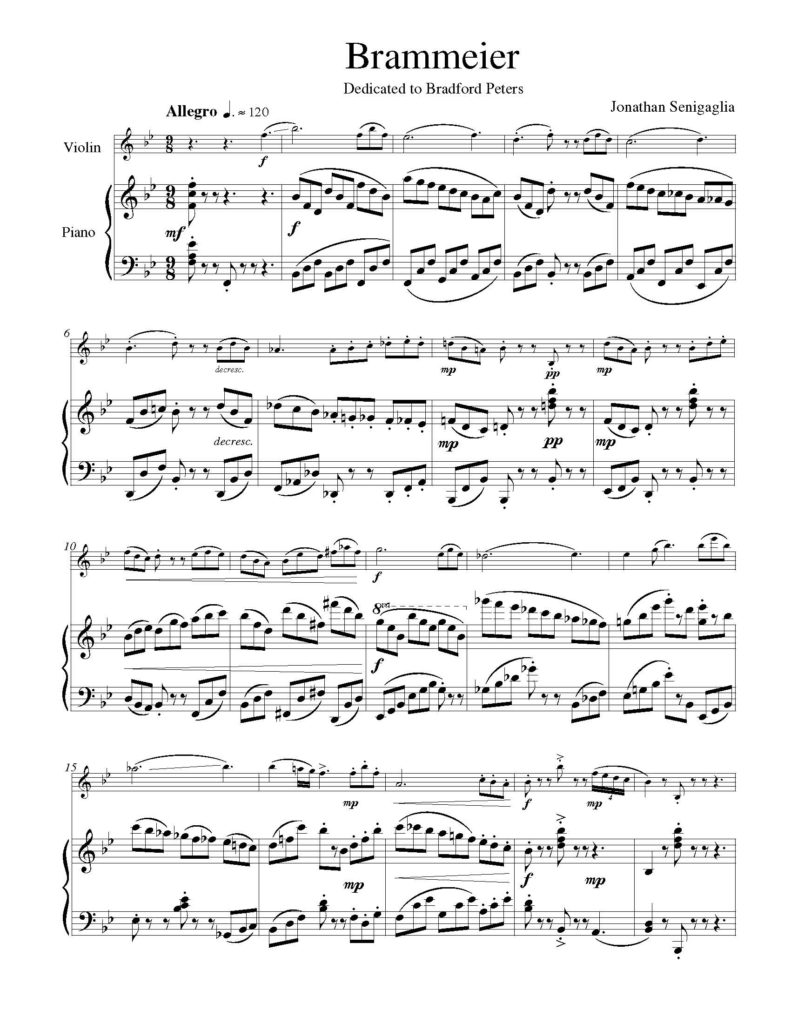
Music that reminds me of drinking absinthe in Prague
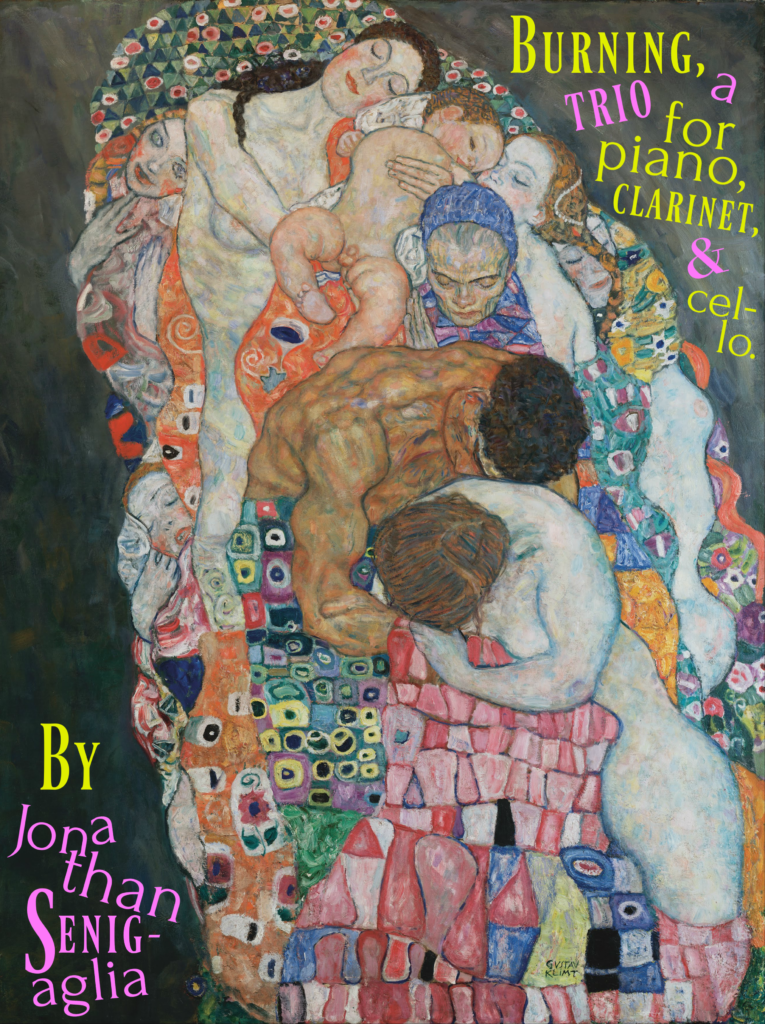
Excerpt from journal.
Dated July 27, 2012 – Prague
On a recommendation from a bartender, we headed toward a pub away from the city center, on some twisted alley or another. Our bellies were full of dumplings and gravy, our hearts starving for adventure. We waltzed into a well-lit bar and took a drink of the scenery.
The air was viscous with cigarette smoke. I immediately felt as though I were deep deep underwater, in a pub at the bottom of the sea. The rowdy conversations of the crowd drifted slowly toward me; from a distance I could see the words coming my way, yet still I couldn’t quite make them out. Men and women emphatically slapped the tables in laughter, rattling the half empty glasses and late night coffees and honey cakes, sending them floating away around the room. Others sipped their absinthes knowingly, balancing their cigarettes so delicately atop their outstretched fingers.
Ah Prague, ah absinthe. In honor of Bohemia we ordered two drams of the green concoction. Actually it wasn’t green… but it did smell like licorice, and it burned, burned!
It suddenly became very warm in that bar.
I was taking in my hazy surroundings when I saw her, sitting silently beside a red couch. She wasn’t outlandish, wasn’t putting herself out there, just relaxing and blending into the scenery. I’m not sure anyone else in the room even noticed her.
She was a thing of beauty.
She had a strong yet elegant frame made of fine wood panels. Her golden pedals glimmered and winked at me, beckoning me. Her keys were made of real ivory, an authenticity that can not be faked. This was no tourist attraction. This was the real shit, the soft underbelly, the pearl, that hard-to-reach part of your back. I was suddenly helpless against a mighty river of desire. I let it take me, wash over me, sweep me away.
I could tell right away that she was played regularly; all the tell-tale signs were present. The keys were bare and open for all the world to see, draped flirtatiously like freshly painted fingernails. The bench was pulled out, a bare leg peeking from beneath a knee-length skirt. However refined she may have seemed to an untrained eye, I could see from across the room how much she loved to be touched, that her strings were tight, her music sweet and pure.
I realized I was in a conversation with a man at the bar. While pretending to chat, my gaze kept wandering to her quiet corner of the room. She stared back at me unabashed. I wanted to put my hands on her that very moment, to know her secrets.
Erica looked at my face and read me like a book. I was lost already and there was no point trying to pull me back. We locked eyes and she signaled that I was free to go. I immediately moved to the instrument.
When I touched, I fell into a trance. Twenty minutes of absinthe-fueled dream music left my body.
Dumplings and cigarettes and alleyways. Twisting streets and beggars with their faces in the dirt. Pianos and absinthe and my wife’s soft skin. Love and travel and hunger and… feeling so lost that you forget what country you’re in.
The Painted Bird
When I read The Painted Bird by Jerzy Kosiński, it disturbed me, in that special way that only great literature can. It tore my brain up, left me feeling very uncertain about who I was, about my own species. This music just had to come out.
Music that reminds me of dog sitting
I wrote this on a ranch. I wrote this at the radio station, late late at night. It’s a song of love. It’s a song about feeling alone.
On the day I finished it, I also finished On Chisel Beach by Ian McEwan. This music wrapped itself around that story, and both were planted deep into my brain. Both the music and that story complain and ache and worry, they both drag it out when it doesn’t need to be that complicated. Both improve with age, with patience, with repetition.
On the day I finished it, I drew this picture:

I also fretted about composing too slowly:

Writing words on sheet music is easier than writing music. Maybe I just need to write music as often as I write words.
This song reminds me of sitting up until all hours of the night, on a couch that wasn’t my own, in a strange house, watching WWII documentaries and checking to see if we’d accidentally let the coyote eat the cat.
It reminds me of the last grasping days of college. I was spending most of my time grasping, grasping at what?… grasping at something.
It reminds me of emerging from a dark cavern to greet the morning sun. It reminds me of waiting, waiting, waiting to grow up.
Years and years and years after I finished the music, I played it for someone. She said, “You’re really starting to get good at this.” I pretended that the music was truly new.
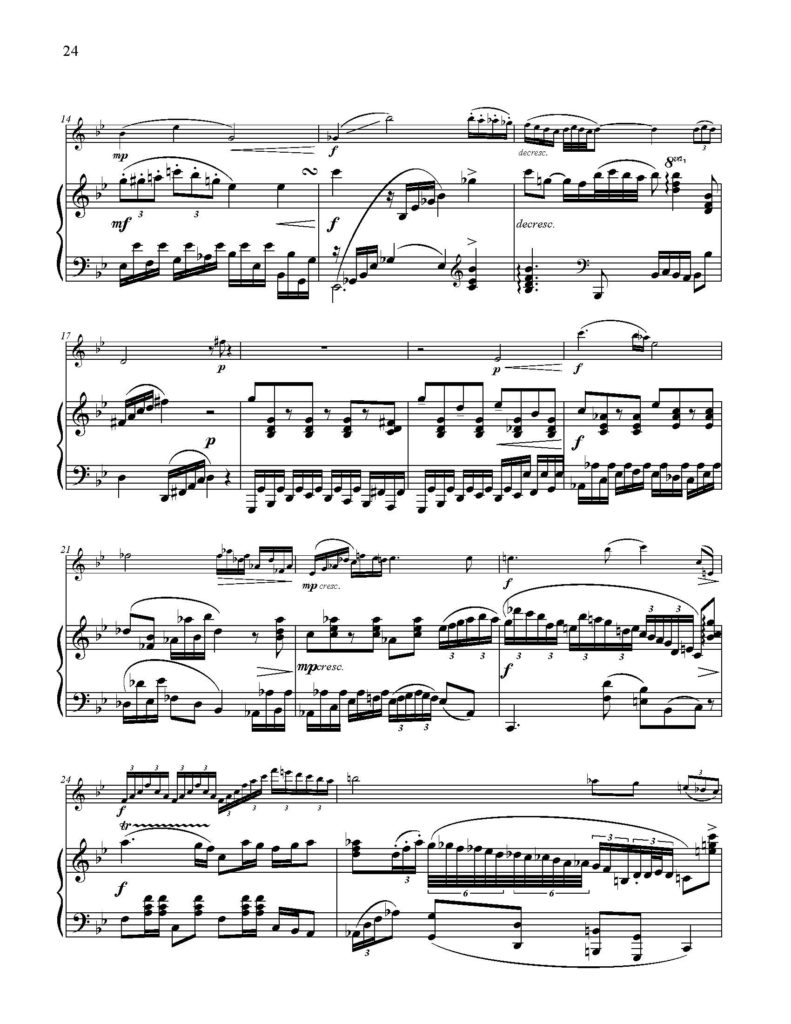
Marshmallow
Who Am I Stealing From Today? (David Wise)
In early January, full of fresh energy and creative juice, I saw the music in a different light and dove headfirst into some new material. In two days I created an entirely original fragment: The Singing House.
Fragment 3: Quaggi – The Singing House
Come on a musical journey with me.
On the far side of the village is the Quaggi – The Singing House. Only men may enter; it is where they go to pray. In times of plenty, the men sing hearty songs of gratitude to the various gods of the Arctic. In times of desperation, they fall into a trance of smoke and dark and sweat and hunger. Arms linked, stomping the holy ground, repeating of the same syllables, the great hunters of the village reach for the gods with outstretched arms.
What does a 10 year old boy imagine of this place? Banned from entering, just like the women, but knowing in his heart, unlike the women, that one day he will be granted entry into the inner sanctum, a young boy of the village can only guess what goes on inside that large tent. He hears from a friend that the sorcerer sings his magic songs and calls upon the Spirit of the Reindeer, and his songs make the wind blow and the ice crack to reveal the seal below. Anxiety and yearning and fear wiggle through his body. One day he would take his place in the Quaggi and learn the secrets of the hunters.
But at fourteen an Inuit feels himself a man, and Kotuko was tired of making snares for wild-fowl and kit-foxes, and most tired of all of helping the women to chew seal-and deer-skins (that supples them as nothing else can) the long day through, while the men were out hunting. He wanted to go into the quaggi, the Singing–House, when the hunters gathered there for their mysteries, and the angekok, the sorcerer, frightened them into the most delightful fits after the lamps were put out, and you could hear the Spirit of the Reindeer stamping on the roof; and when a spear was thrust out into the open black night it came back covered with hot blood.
I should also note that I openly plagiarized the work of another composer in this piece: David Wise, who wrote all the music from Donkey Country (1 and 2). Here’s the tune I stole:
So good right?
The music from this game was the running soundtrack of my childhood. When I was in middle school, I used to pretend I was in a band (perhaps in some jazzy night club) performing this very song. This music shaped me and my compositional style. I feel honored to sample this man’s music.
The form of “Quaggi” is reminiscent of video game music. The first section is a long musical segment consisting of variations on a couple themes. It then repeats. In fact it could repeat on loop and just BE video game music.
Thoughts on Quiquern: Music can reveal that all humans are one family
(Hit Ctrl+ to read this journal entry).

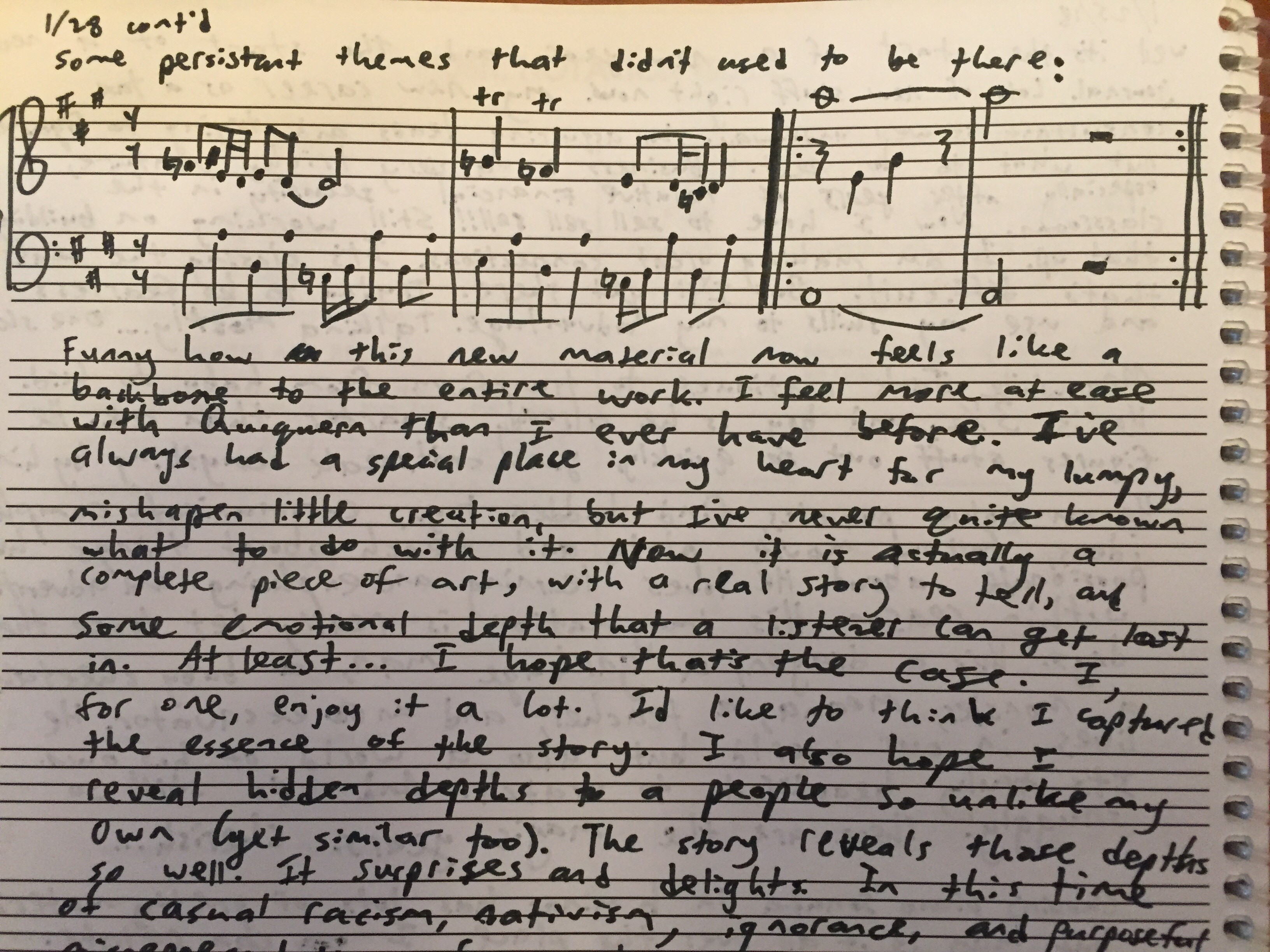
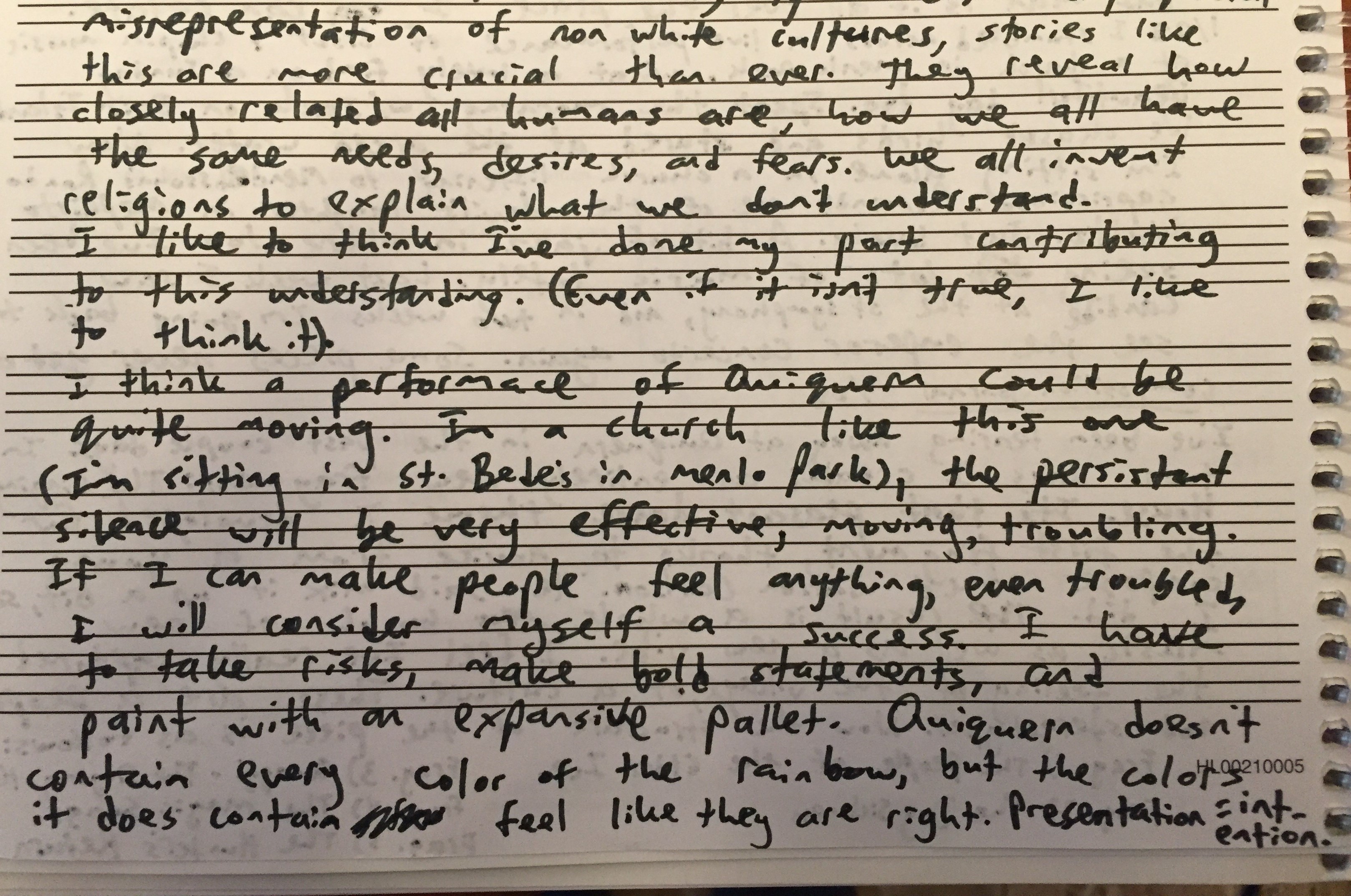
Here’s the piece I was listening to as I wrote this:
You can read more about Quiquern here.
Quiquern: Village Dance
Here’s the new version:
I posted what I thought was a complete movement on a favorite forum of mine, the Young Composers Music Forum, (here’s the post). A young composer named Jarron Carlson posted a very thoughtful response:
“Thank you for sharing this (wonderfully poetic!!) music! I love your use of motifs and how creative you are with your harmonic language. Especially in the first movement, I really admire your use of more traditional harmonies how they slip into sonorities that are more modern-sounding. I do wish however, that you exposed us to more variety in texture in the first movement. I feel like most of the piece you stick to the feel of (for lack of a better word) intruding silences and pauses preceded by short melodic phrases. Maybe you were going for this feel throughout the whole movement, but I sort-of wish I got the chance to hear you develop your motivic ideas in a different kind of texture. Texture change can also be very effective for communicating different emotions to your audience (which I read was one of your goals in this piece and I feel like you’re already doing well already, with your writing as it is :)”
That critique really struck home. Quiquern has always been one of my children, and I love her dearly, but she has never been perfect. One persistent problem across the years has been a lack of diversity of sound. There are lots of lovely segments of Quiquern, but when taken together they tend to blend into something long and monochromatic (a touch of which I was going for, as I wrote the music picturing a frozen tundra, but too much can be too much). Throw in a new texture, mix in some beloved themes previously heard, and BOOM magic happens. A fire was lit! I mean shoot, I had enough material to work with!
By the way, you can check out some of Jarron’s work at his Soundcloud: https://soundcloud.com/jarron1099.
I don’t often compose quickly, but this stretch was fast. Statistically now it has been proven that I almost always very musically productive in late December. My Song-Writing Club took place in December, as have many feverish bouts of creative activity. I started the new section the evening I received the critique (Dec. 13), and completed the new section New Year’s Eve (Dec. 31). Just under 20 days to complete about seven minutes of new music; for me that’s pretty dang quick.
I took the main Quiquern theme and wove it a kind of lively folk dance, the piano strumming like a guitar, a people dancing in the firelight. The woodwinds play all sorts of little games together, chase each other across the ice. There is something festive about this music, but still somber. Just beyond the warmth of that fire is an endless frozen wilderness. It is bitterly cold out there, so cold a man’s skin can freeze off his bones, so cold you go mad. Something is lurking out there, in the distant dark. It could be a god or it could be a monster, or perhaps the wind. Right here, safe by the fire, with my family all around me, I am safe and warm. I celebrate that warmth and cherish it, while I still have it. I pray that all those who don’t have it may find it soon.
How to express a people through music… How to express all the depth of the human experience, all the moments and understandings shared among a tribe… It feels like an impossible task. But at least I feel I added another layer. I wanted these people to celebrate who they are in this music, to have a little fun, to play and wrestle and love. At the edge of the world, surrounded by danger, I wanted them to dance.
The image on this page is my an artist named Milo Minock, who meticulously documented the goings-on of the Yup’ik tribe in the 1950s and 60s. Read about his work here.
Sketching a symphony
I’m writing some music for my friends. More on that in a bit.
These little nuggets will one day become my first symphony. I guess wouldn’t exactly call them sketches since the music is written beginning to end, but they feel rough because they are not yet fully orchestrated. Either way, once that final orchestration phase is complete, this work will be a substantial piece of music, with a lot of rich content for the listener to explore.
For now I’ve chosen a basic instrumentation of flute, oboe, trumpet, low strings. This can give a feel of being fleshed out, but is small enough to make sketching manageable, and colorful enough to make it fun. This instrumentation also helped me get away from the violin-centric symphony model, since I haven’t included violins in my original sketches. When I sit down and orchestrate this thing for real I will add violins in at my leisure, like a painter who, with one smooth movement, adds a bit of reflected light to a child’s eye.
The next step is to dive deep into the orchestration and make some hard choices. But for now, I’m savoring the completion of an crucial leg of this artistic journey. This particular piece has taken years to get to this spot, and where it will eventually lead I am not entirely sure. Sometimes it’s just important to pause and recognize a milestone.
The working title is “Adventure Cat!”. I’m not totally settled on all aspects of this music, but the overall arc I love. This is music for my friends. It’s a celebration of what we’ve all accomplished together, what we’ve built, the life we’ve lived, the love we’ve felt. The music goes a lot of different places, as do long friendships.
The music also challenges the ear at times, and other times it’s warm and inviting. It tries to take he listener on a road trip, over a fence, into the dark night. Sometimes it’s a song of love, a private moment, a hidden cave.
When I dive back into this music and turn these nuggets into completed symphony movements, I may end up expanding certain chunks, or slowing down the tempo for a section, or taking the music in a slightly different direction if the mood strikes me. I’m still shaping the clay a bit. But the meaning behind the music will not change. It’s that meaning that underscores every note of this music, every rise and fall. It’s that meaning that drives me to complete it.
I welcome any feedback.

